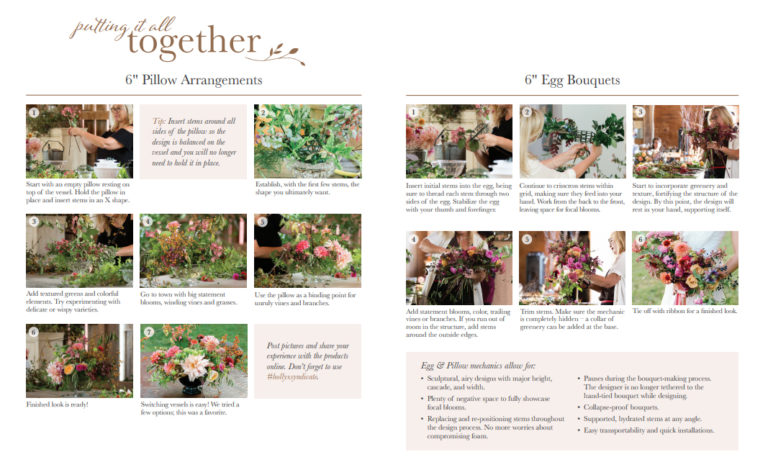The eagerly anticipated Holly Chapple range is finally here!! We are so happy that it has finally landed in store and thought that we we would share exactly what this range can do for you.
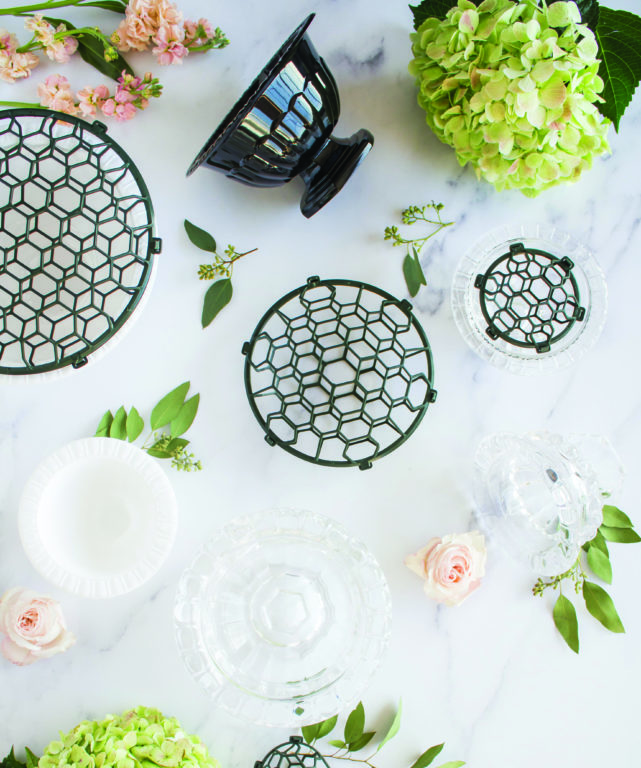
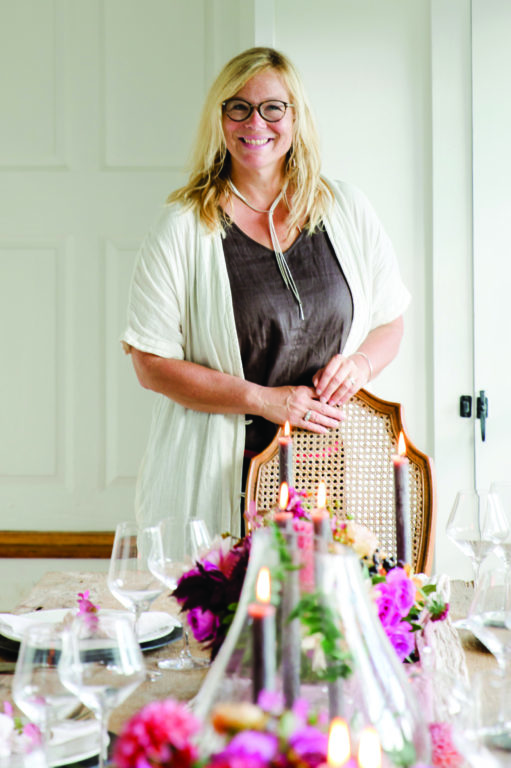
The Backstory
Florists have been using flower foam to create floral designs for decades. These dense green bricks of foam hold water, provide support to stems, and serve as the base for bouquets in shallow vases or bowls. But foam has fallen out of favor with many designers for lots of good reasons. First and foremost, foam creates a lot of waste that cannot be composted and doesn’t decompose. In addition to not being very environmentally friendly, another big detractor is the fact that foam makes bouquets look excessively formal and “stiff.” Plus, some flowers, including many of the more delicate seasonal blooms, don’t last long when inserted into foam or can’t be inserted into foam at all.
The shift towards on trend, loose, organic bouquet shapes using seasonal flowers has meant that many designers, typically use chicken wire in the base of vases, compotes, urns instead of foam in order to provide support for the stems. For years, cutting chicken wire and crumpling it up to insert it into compotes has been part of the process of creating bouquets.
Holly has partnered with Syndicate Sales to manufacture a lightweight, reusable plastic armature, called a “pillow,” that fits into compotes and other vases. This ingenious product provides similar stem support as chicken wire, but without hurting your hands with the time-consuming task of cutting and shaping wire. This is a fantastic addition to the market for floral designers. Goodbye foam and so long cutting chicken wire. Hello, fast, easy, natural looking arrangements!
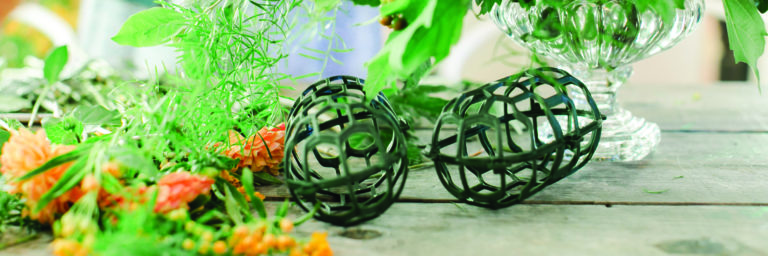
The Products
Basically, her “egg” concept allows you to insert flower stems at all angles and keep them in a horizontal fan-shaped or asymmetrical array without the flowers popping to a vertical position when the stem handle is tied.
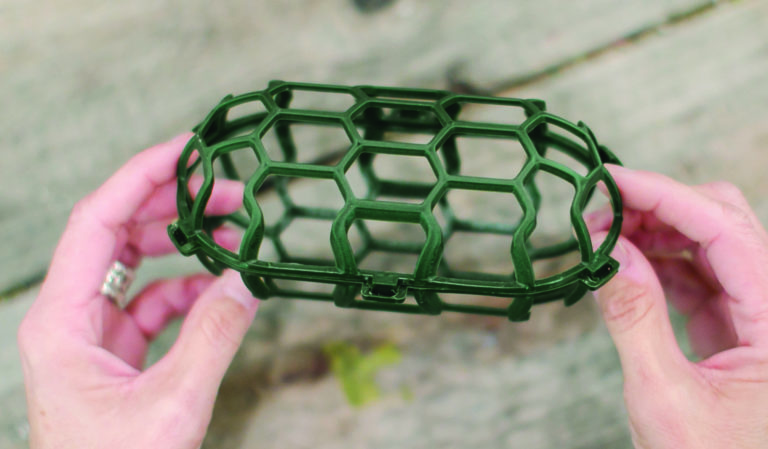
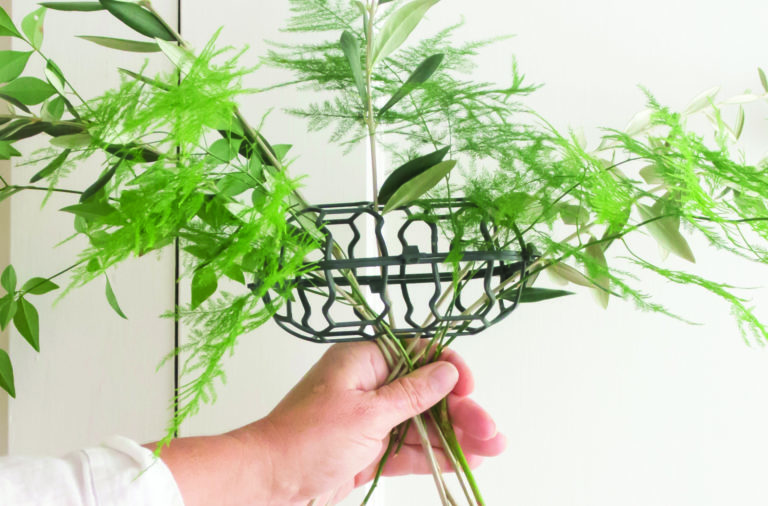
Holly has also designed what she calls a chicken wire “pillow” that rests on top of the vase rim, rather than placing the chicken wire into the bottom of the vase. The difference in using this method is notable. It allows the designer to have stems that are nearly horizontal but still hydrated in water.
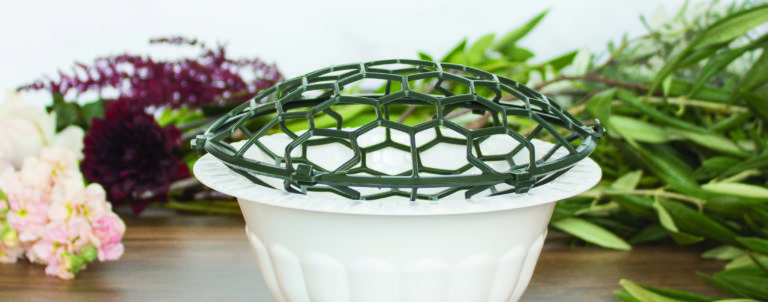

The design freedom that comes with using these egg and pillow shapes is quite freeing and guilt-free, because the chicken wire can be used over and over again or recycled. By the time the bouquet or centerpiece is finished, the wire is completely obscured from view, hidden inside where it does all the necessary work that a mechanic should do.

Holly Chapple
"The egg is wonderful for bouquets because you are able to create natural, loose, free form bouquets with less product. It keeps the stems from collapsing and stops the design from becoming a tight round ball. Because of the armature, you can lay the design down as you are working — go to the restroom, nurse a baby, or just give your hands a break! The egg cradle can also be used to tie on heavy items like tillandsia or fruit. The structure adds support to the design".
"The pillow is larger than the vessel and rests on the rim of the vase. It is not necessary to use tape. Because the pillow is elevated and offers two layers of support, the design is very sound. The stems go through both layers and rest in the water. You’re actually able to pick up the entire design and remove it from the container to freshen up the water and/or change the design to a different vase. This will be a huge benefit for the person receiving the design, the florist in the retail shop who has to keep water fresh, and the event designer who loses water during transport".

